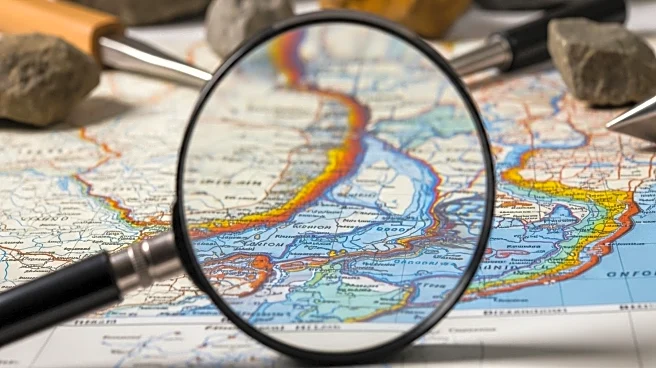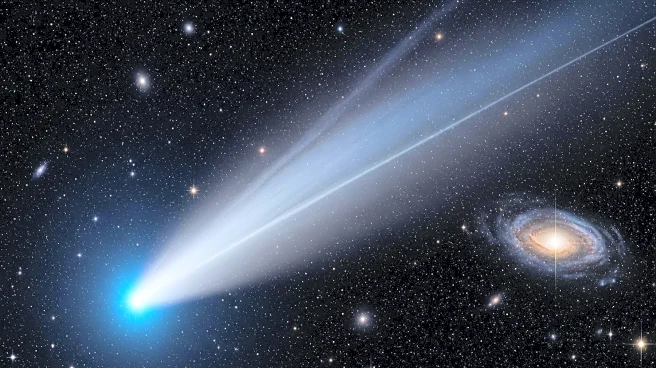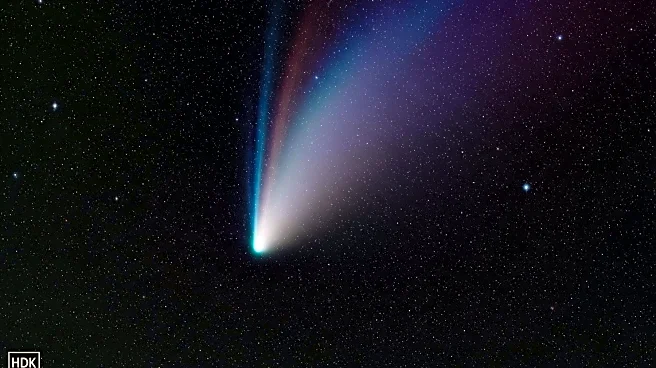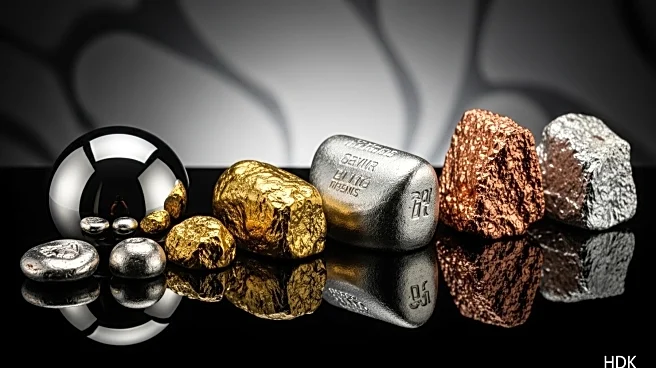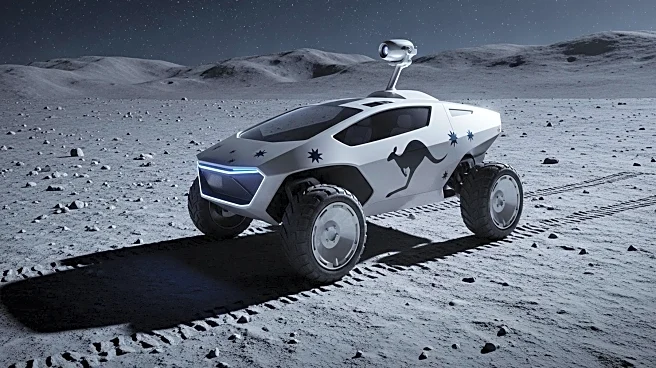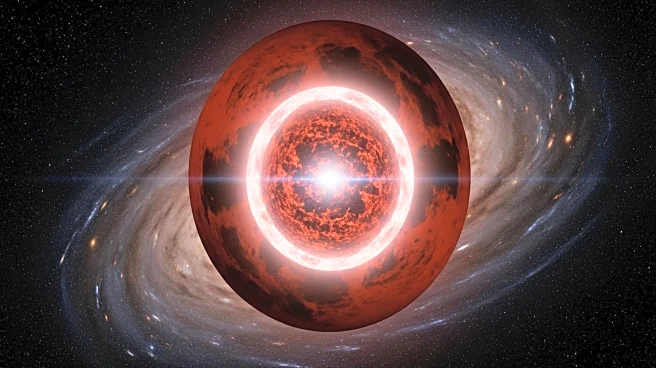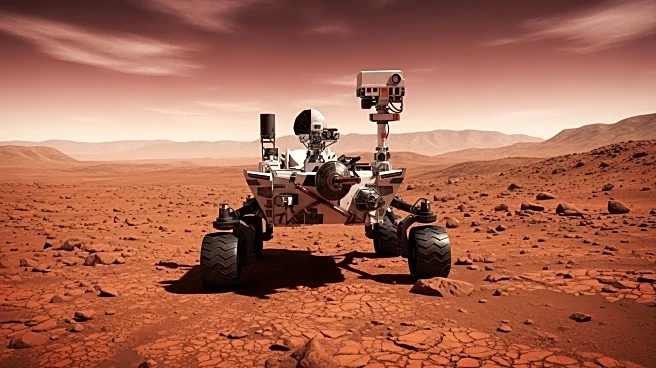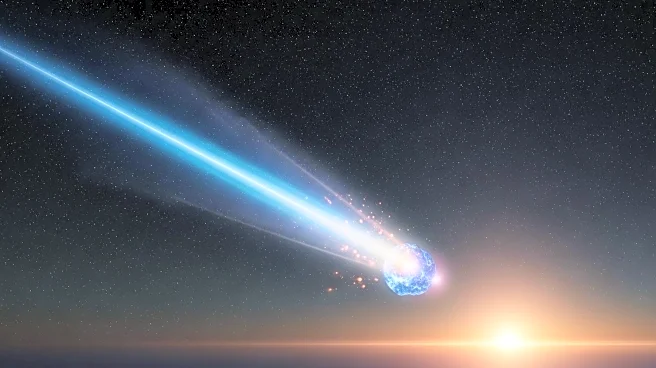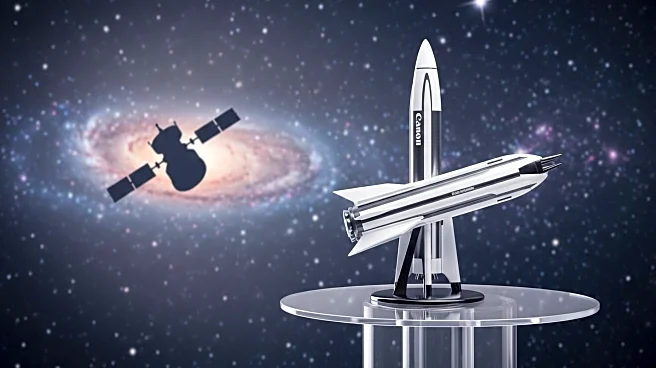What is the story about?
What's Happening?
A recent geological study delves into the processes of ore formation, particularly focusing on hydrothermal activities. Hydrothermal processes involve the movement of superheated fluids through the Earth's crust, which can lead to the formation of mineral deposits. These fluids, often hundreds of degrees Celsius, carry dissolved minerals such as silica and metals like gold, which can precipitate to form ore bodies. The study highlights the significance of pegmatite deposits, which are formed when these fluids cool slowly, allowing large crystals to develop. These deposits are rich in valuable elements like lithium, cesium, and tantalum, which are crucial for modern electronics. The research also discusses orogenic ore deposits, formed when hydrothermal fluids escape magma chambers and travel through rock fissures, depositing minerals like gold and silver.
Why It's Important?
Understanding hydrothermal processes is vital for the mining industry, as these processes are responsible for the formation of economically significant mineral deposits. The study's insights into pegmatite and orogenic deposits can guide prospecting efforts, especially in regions like North America where there is active exploration for lithium and rare-earth elements. These minerals are essential for the production of electronic devices, making their extraction crucial for technological advancement. Additionally, the study's findings could influence future mining strategies, potentially leading to more efficient extraction methods and better resource management.
What's Next?
The study suggests that further exploration of hydrothermal processes could uncover new mineral deposits, not only on Earth but potentially on other celestial bodies like the Moon and Mars. As technology advances, the demand for minerals like lithium and rare-earth elements is expected to grow, driving more research into efficient mining techniques. Geologists may focus on identifying new pegmatite and orogenic deposits, which could lead to the discovery of untapped resources. Additionally, the study may prompt discussions on sustainable mining practices, considering the environmental impact of mineral extraction.
Beyond the Headlines
The study raises questions about the sustainability of mining practices and the environmental impact of extracting minerals from hydrothermal deposits. As demand for electronic devices increases, so does the need for the minerals used in their production. This could lead to intensified mining activities, potentially affecting ecosystems and local communities. The research also opens up possibilities for space exploration, as similar processes might occur on other planets, offering new opportunities for resource extraction beyond Earth.
AI Generated Content
Do you find this article useful?
